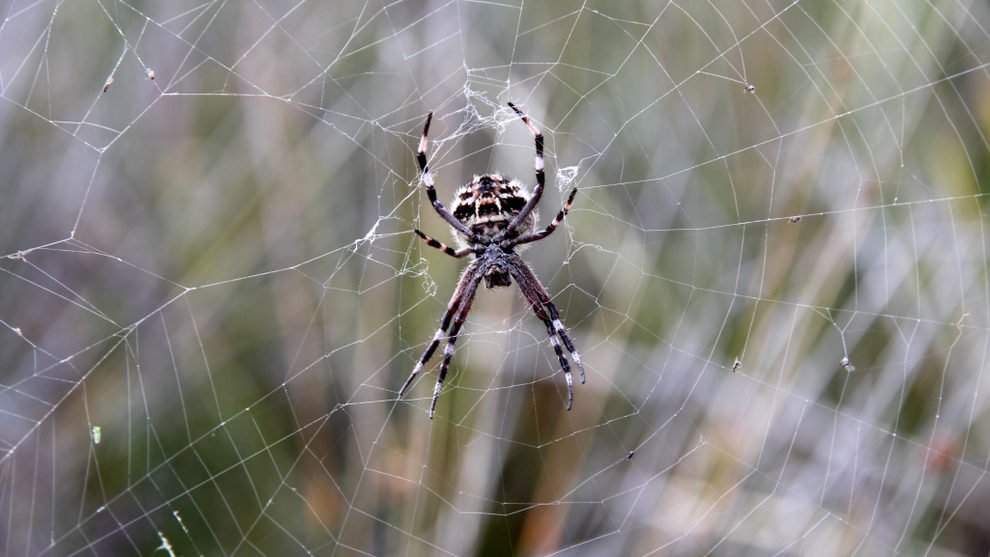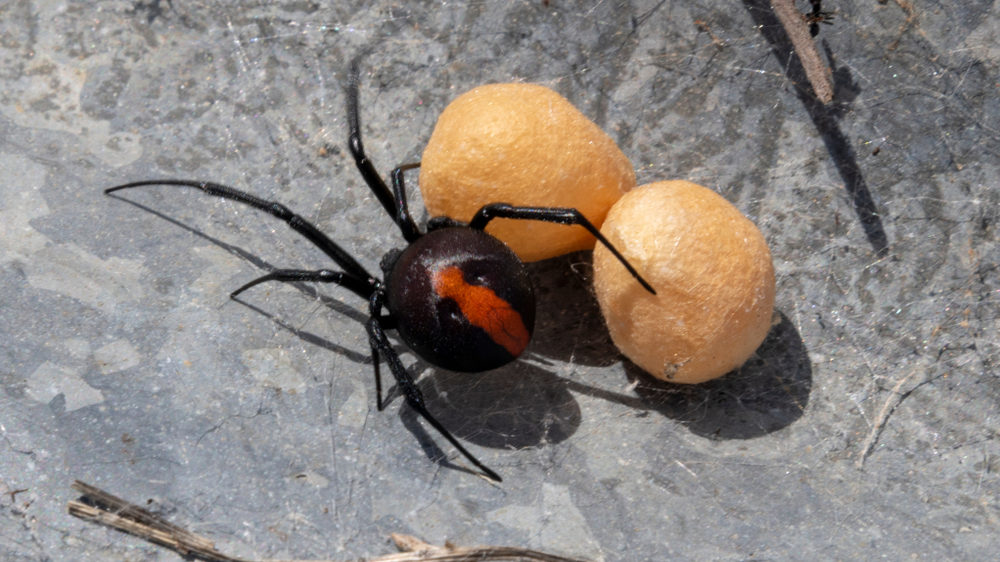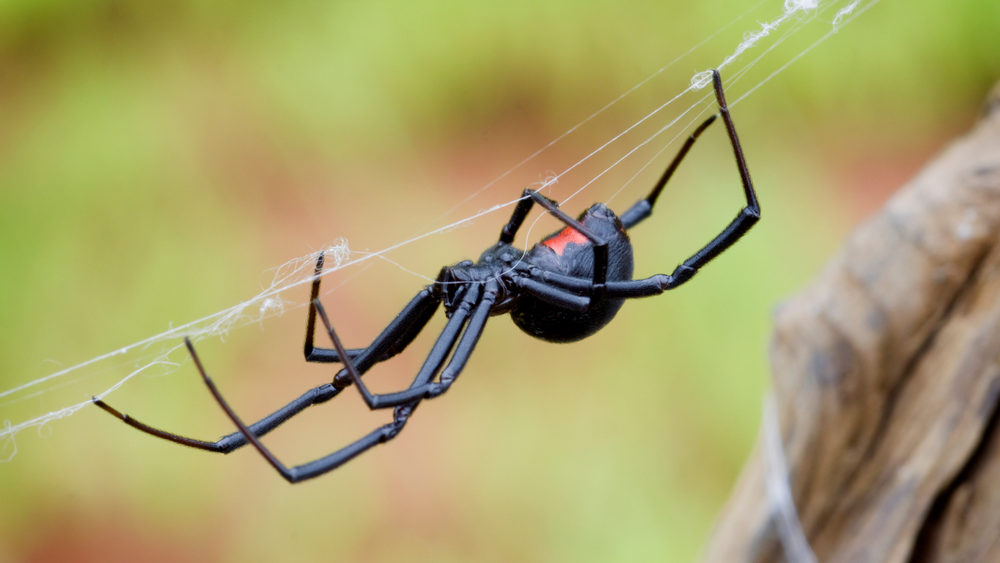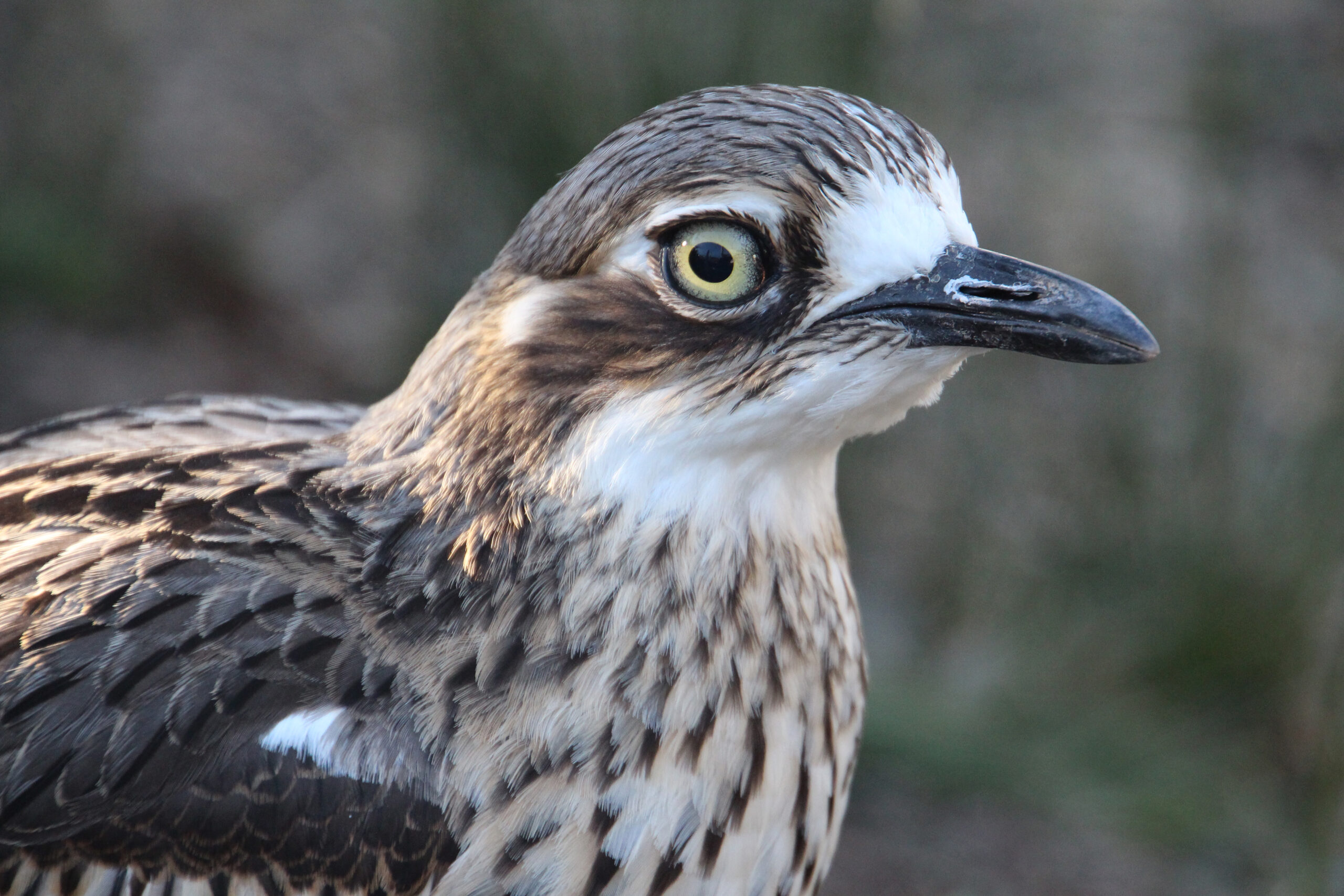| Common name | Redback spider |
| Scientific name | Latrodectus hasselti |
| Type | Spider |
| Diet | Carnivorous, eating mostly insects |
| Average lifespan | Females between two and three years, males between six and seven months |
| Size | Females measure 1cm, males measuring between 3mm and 4mm |
The redback spider has been a well-known member of Australia’s most notorious species list for years, with very few locals unaware of its venomous potential. A bite from a redback does pack a venomous punch, but lucky for us, these spiders are non-aggressive and prefer to be left well alone in the back of your garden shed.
Belonging to the family Theridiidae, the redback is a close relation of the USA’s venomous black widow spider, with other species of Latrodectus, or widow spiders, found across the world. It’s the female spider which gives the species its common name, with its famous red to orange stripe on the upper abdomen. Female redbacks are also the gender considered most dangerous, with male spiders only measuring in at about 3mm. Males have a light brown body with white markings on the upper side of the body and a much paler, hourglass marking on the underside.

Found throughout Australia, these adaptable arachnids are particularly common in human-inhabited areas of the country. You may have stumbled across a redback in the shed, garage or under the house, and yes, the urban legend of finding a redback in the outside toilet is unfortunately more accurate than most would like to believe.
Preferring dry and dark areas, redbacks can be found in logs, under rocks, or in crevices in the bush, with similarly sheltered outdoor areas including garden pots, rubbish-piles, and unused sandpit buckets and toys, included among the many redback habitats.

The redback spider uses its detailed web as a method for catching prey, which consists of tangled, dry silk, with vertical, sticky traplines running from the spider’s upper-retreat area to the ground. Eating mostly insects, redbacks will feed on larger animals such as king crickets, baby mice, and small lizards and snakes, if they become stuck in their web. Females readily steal stored food from other spider webs and redback hatchlings will also eat their siblings.

In a brutal process of reproduction, the male redback spider occupies the female’s attention during mating by offering her his abdomen. The female inserts digestive juices into the male’s body, and during this breeding behaviour that is unique to the Latrodectus hasselti species, the female continues to ‘digest’ the male while he inserts a palp into the female.
The female then lays three to eight egg sacs between September and May, each filled with around 300 eggs. Another tough reality of the redback life cycle takes place when most of the hatchlings are either eaten by their siblings or succumb to wasp parasitism, with only a few reaching maturity at around three to four months.
Most reported spider bites within Australia come from the redback, yet there have been no subsequent deaths for over 50 years, thanks to the introduction of an anti-venom. Redback spiders aren’t naturally aggressive and won’t bite unless their webs are disturbed, or they are accidentally picked up and sometimes give a non-venomous warning bite if threatened. Venom from a redback bite can cause a range of reactions from swelling and nausea to headaches and increase blood pressure, even still, anti-venom is usually only given to those who suffer serve illness from the bite.






